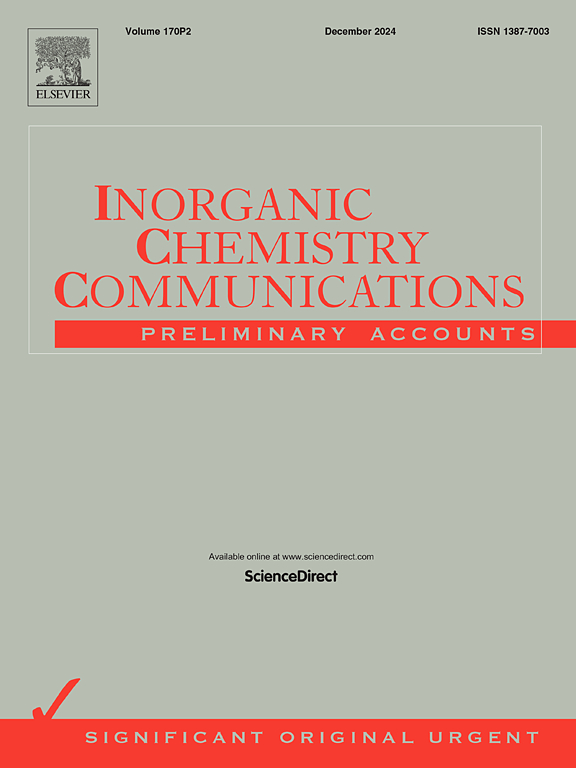Interfacial mechanisms of uranium removal using bismuth hydroxide-impregnated graphitic carbon nitride
IF 4.4
3区 化学
Q1 CHEMISTRY, INORGANIC & NUCLEAR
引用次数: 0
Abstract
The effective extraction and recovery of U(VI) from wastewater through a straightforward adsorption approach is essential for mitigating environmental hazards and enabling the recycling of nuclear materials. In this study, a bismuth hydroxide (Bi(OH)3)-doped graphitic carbon nitride (GCN) composite was synthesized and tested for U(VI) adsorption. The GCN/Bi(OH)3 composite was thoroughly characterized using advanced spectroscopy and microscopy techniques including XRD, FTIR, SEM, EDS, and XPS. The influence factors such as pH, initial concentration, contact time, and thermodynamic properties on the adsorption process was thoroughly examined. The maximum U(VI) up taking capacity of GCN/Bi(OH)3 reached 118.56 mg/g at a pH of 4.0 and a temperature of 293 K. This significant enhancement in adsorption capacity demonstrates the effectiveness of Bi(OH)3 doping in improving the material’s ability to capture U(VI) ions. The GCN/Bi(OH)3 composite also exhibited a stable spherical structure, excellent regeneration potential, and reusability, making it an ideal candidate for sustainable use. The primary mechanism driving U(VI) adsorption was found to be inner surface complexation through endothermic, as confirmed by experimental and characterization analyses. This study introduces a simple and effective synthesis method for producing GCN/Bi(OH)3, a promising adsorbent for the efficient removal and recovery of U(VI) from radioactive wastewater and re-used more than six cycles with 70% removal efficiency, contributing to environmental protection and resource recovery.
氢化铋浸渍石墨氮化碳除铀界面机理
通过直接吸附法从废水中有效提取和回收铀(VI)对于减轻环境危害和实现核材料的循环利用至关重要。本研究合成了一种氢氧化铋(Bi(OH)3)掺杂石墨氮化碳(GCN)复合材料,并对其吸附U(VI)进行了测试。采用XRD、FTIR、SEM、EDS、XPS等先进的光谱学和显微技术对GCN/Bi(OH)3复合材料进行了表征。考察了pH、初始浓度、接触时间、热力学性质等因素对吸附过程的影响。GCN/Bi(OH)3在pH为4.0、温度为293 K时的最大U(VI)吸附量为118.56 mg/g。这种吸附能力的显著增强表明Bi(OH)3掺杂在提高材料捕获U(VI)离子的能力方面是有效的。GCN/Bi(OH)3复合材料还具有稳定的球形结构、良好的再生潜力和可重复使用性,是可持续利用的理想候选材料。通过实验和表征分析,证实了吸附U(VI)的主要机理是吸热内表面络合作用。GCN/Bi(OH)3是一种高效去除和回收放射性废水中U(VI)的吸附剂,可重复使用6次以上,去除率达70%以上,有利于环境保护和资源回收。
本文章由计算机程序翻译,如有差异,请以英文原文为准。
求助全文
约1分钟内获得全文
求助全文
来源期刊

Inorganic Chemistry Communications
化学-无机化学与核化学
CiteScore
5.50
自引率
7.90%
发文量
1013
审稿时长
53 days
期刊介绍:
Launched in January 1998, Inorganic Chemistry Communications is an international journal dedicated to the rapid publication of short communications in the major areas of inorganic, organometallic and supramolecular chemistry. Topics include synthetic and reaction chemistry, kinetics and mechanisms of reactions, bioinorganic chemistry, photochemistry and the use of metal and organometallic compounds in stoichiometric and catalytic synthesis or organic compounds.
 求助内容:
求助内容: 应助结果提醒方式:
应助结果提醒方式:


